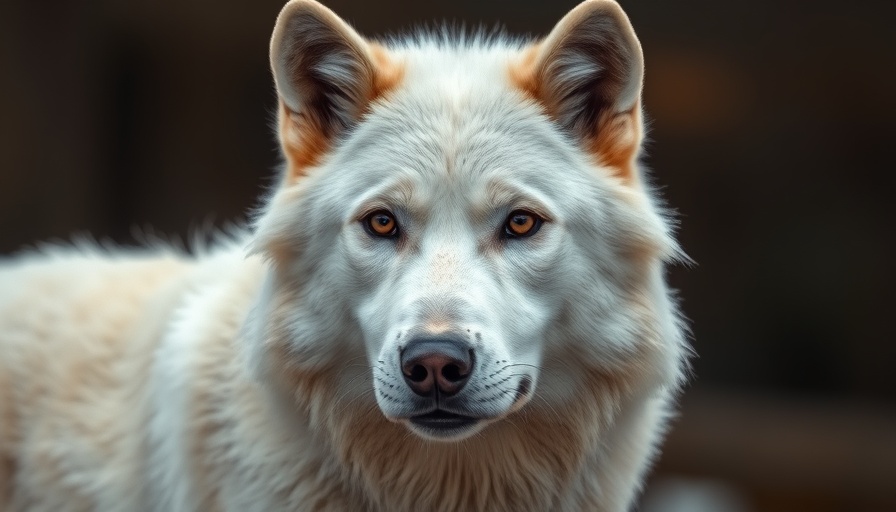
The Daring Revival of the Dire Wolf: Analyzing the De-Extinction Trend
In a stunning leap that blurs the lines between science fiction and real-life breakthroughs, a team of researchers from Colossal Laboratories and Biosciences has announced the successful de-extinction of the dire wolf, a once-mighty predator that roamed North America around 10,000 years ago. Dubbed 'Remus' and 'Romulus,' these modern iterations of the dire wolf provoke a whirlwind of questions surrounding ethical ramifications, ecological impacts, and the very nature of extinction itself.
Understanding the Dire Wolf’s Ecological Role
Before diving into the complexities of de-extinction, it's vital to understand the dire wolf's historical significance in the ecosystem. Once a top predator, Aenocyon dirus thrived during an age when prey species like the mammoth and giant ground sloth were abundant. While discussions abound regarding the de-extinction of this majestic creature, the broader question of its rightful place in today’s ecosystem arises; can a species that vanished due to natural selection re-establish itself without triggering unforeseen consequences?
Modern Technology Meets Ancient Species: The Role of Genetics
With advancements in CRISPR technology and the procurement of ancient DNA, Colossal’s ambitious plan pitches a future where extinct animals can reclaim their habitat. However, as scientific endeavors to recreate ancient species become a headline-grabbing spectacle, veterinarians and animal welfare advocates raise critical points about genetic manipulation. Could these artificially replicated animals face unforeseen health issues? What role might veterinarians play in ensuring their wellbeing?
Ethics of Resurrection: Righting Wrongs or Creating New Mistakes?
While the notion of correcting historical wrongs can be alluring, many conservationists argue that efforts should focus on preserving current endangered species rather than resurrecting those that have been gone for millennia. Pet rescue organizations and animal advocates warn of the risks that may accompany such practices, including diverting resources from saving species that are on the brink of extinction. We must ponder: is this de-extinction movement merely a flashy gimmick or a genuine contribution to biodiversity?
Navigating the New Landscape of Animal Medicine and Care
This groundbreaking venture doesn’t just challenge ecological norms; it poses new challenges for pet care professionals, including veterinarians, pet nutritionists, and animal trainers. How will they adapt their practices to accommodate the needs of creatures that dazzle us with nostalgia but may not be equipped to thrive in modern environments? The intersection of veterinary care and de-extinct species introduces a new frontier for professionals in the animal care sector.
The Future Awaits: A Call to Action
As this narrative unfolds, the role of the public and advocacy groups becomes increasingly important. Whether you are a pet parent, a trainer, or an animal rights advocate, being engaged in the conversation surrounding de-extinction is vital. Consider contributing your insights and opinions on this evolving subject. Join local forums and discussions to stay informed and proactive in shaping the future of animal care and conservation.
The world of de-extinction is as exhilarating as it is daunting. For those among us who share a love for animals—be it through personal relationships with pets or professional endeavors in animal care—the implications of this scientific leap go far beyond the allure of bringing back the dire wolf. Ask yourself, how can you contribute to the ongoing dialogue about the ethical and ecological implications of de-extinction?
 Add Row
Add Row  Add
Add 




 Add Row
Add Row  Add
Add 


Write A Comment